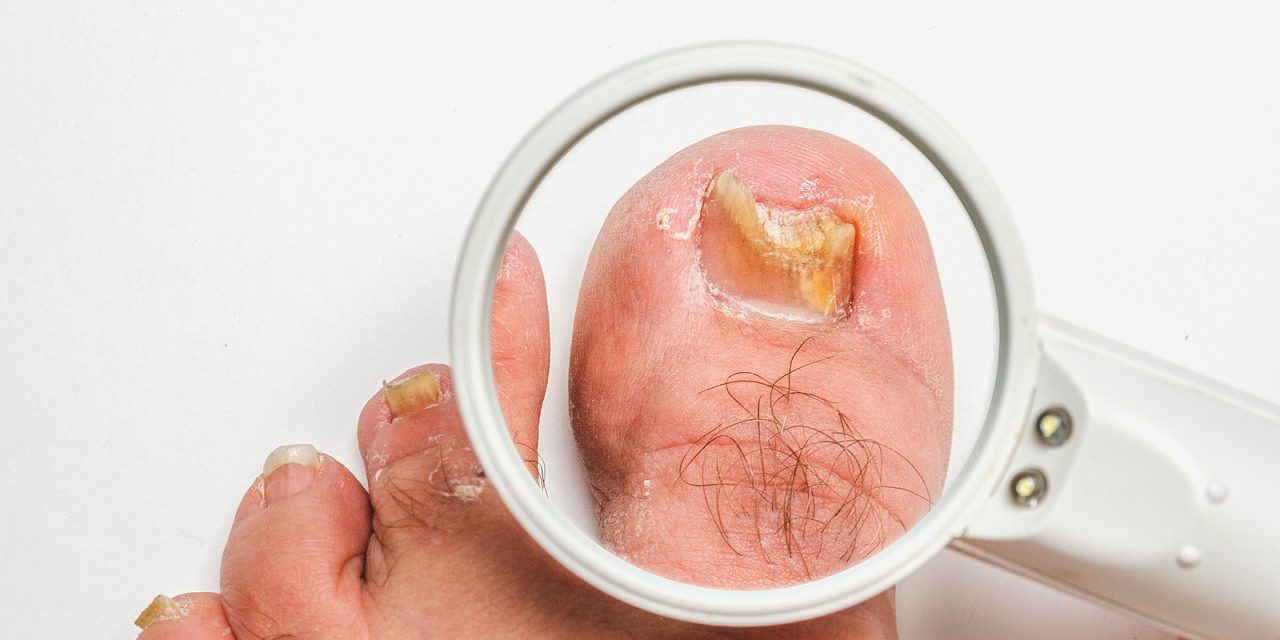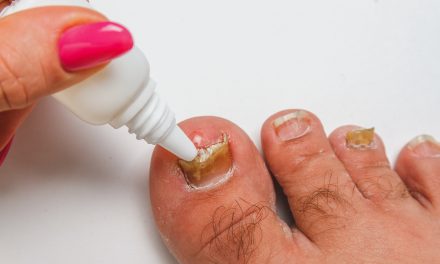Toenail fungus, medically known as onychomycosis, is a common condition that leads to the discoloration, thickening, and often, the disfiguration of the toenails. It occurs when various types of fungi invade and grow beneath the nail, promoting a range of symptoms that can propagate both on and under the nail bed. This condition not only impacts the nail’s appearance but may also cause discomfort and affect the ability to perform everyday activities, especially when wearing shoes.

While it is widely recognized that toenail fungus can have a detrimental effect on foot health and comfort, there is a less apparent concern regarding its potential to cause or exacerbate neuropathy – a type of nerve damage often characterized by pain, tingling, or numbness. Those at heightened risk, such as individuals with diabetes, may find that fungal infections pose a greater threat, potentially leading to more significant complications due to poor circulation and compromised immune responses. It is crucial to properly manage toenail fungus to minimize the likelihood of associated health issues. яндекс
Key Takeaways
- Toenail fungus can cause significant discomfort and impact everyday activities.
- There is a potential risk of toenail fungus leading to or exacerbating neuropathy.
- Effective management of toenail fungus is critical to preventing further complications.
Understanding Toenail Fungus
Toenail fungus, also known as onychomycosis, is a common condition that affects many individuals, often leading to discolored and misshapen nails.
Causes of Toenail Fungus
Toenail fungus is primarily caused by an overgrowth of dermatophytes, which are a type of fungus that thrives on keratin, the protein found in nails. However, not all toenail fungal infections are due to dermatophytes; some may be caused by yeast or molds. These organisms can enter through small cuts or the tiny separation between the nail bed and the nail, especially in environments that are warm, moist, and dark – typical conditions for fungal growth.
- Dermatophyte Fungi: The most common pathogens that lead to toenail fungal infections.
- Yeast: A type of fungus that can also affect the nails, particularly in people with weakened immune systems.
- Molds: Typically not a primary cause of nail infections but can be involved in some instances.
Symptoms and Diagnosis
The symptoms of toenail fungus are quite distinguishable and often start with a small spot of discoloration on the nail. The nail may become:
- Brittle, crumbly, or ragged
- Thicker or change shape
- Dull, with a loss of shine and luster
As the infection progresses, the nail may separate from the nail bed. A proper diagnosis usually involves a healthcare provider inspecting the affected nails and may include a laboratory test that identifies the specific type of fungus involved. Identification is essential, as treatment may vary depending on the fungal organism responsible for the infection.
Does Toenail Fungus Cause Neuropathy?
Toenail fungus, medically termed onychomycosis, primarily affects the toenails, causing symptoms such as discoloration, thickening, and brittleness. While toenail fungus itself does not directly cause neuropathy, there are indirect connections that should be considered.
Neuropathy, characterized by pain, numbness, or weakness usually in the hands and feet, can stem from a variety of causes, including diabetes and poor circulation. Diabetic individuals are particularly at risk for both toenail fungus and peripheral neuropathy. The underlying factors that predispose someone to toenail fungus, such as a compromised immune system or circulatory issues, can overlap with the factors that contribute to neuropathy.
- Diabetes: Can lead to both neuropathy and an increased risk of fungal infections due to immune system impairment and blood flow issues.
- Poor Circulation: Might predispose individuals to toenail fungus, which in turn can lead to secondary complications if not promptly treated.
It is crucial to maintain good foot hygiene and monitor for signs of toenail fungus, especially if one has diabetes or circulatory problems, to prevent potential complications. While toenail fungus does not directly lead to neuropathy, the presence of one can be an indicator of susceptibility to the other.
If one experiences symptoms indicating either condition, seeking medical advice is essential. Prompt treatment of toenail fungus can prevent more serious issues that can exacerbate neuropathic conditions.
The Link Between Toenail Fungus and Systemic Infections
Toenail fungus, if left untreated, may lead to complications where the fungal infection transcends beyond the local toenail area. It’s essential to understand how these seemingly isolated conditions can have broader health implications.
Fungal Nail Infection and Bloodstream Invasion
Fungal nail infections, primarily caused by dermatophytes, have the potential to breach the local confines of the nail bed and enter the bloodstream. In individuals with a compromised immune system, such as those with diabetes or those who are immunosuppressed, the risk of a local infection turning systemic is heightened. When the fungus invades the bloodstream, a condition known as fungemia occurs, which can lead to widespread bodily infection and potentially affect vital organs, including the lungs.
Secondary Bacterial Infections
The presence of a fungal nail infection can disrupt the integrity of the nail and surrounding skin, creating an entry point for bacteria. This secondary bacterial infection can take hold, further compromising the skin and sometimes leading to conditions like cellulitis. If bacteria from a local site such as an infected toenail gain access to the bloodstream, it can cause a serious infection known as bacteremia, demanding prompt medical attention to prevent sepsis or other systemic infections.
Identifying Risks and Prevention
Understanding the risk factors and implementing preventative measures are crucial in mitigating the effects of toenail fungus and its complications, such as potential neuropathy.
Risk Factors
Toenail fungus, known medically as onychomycosis, can lead to complications including neuropathy, particularly in those with preexisting conditions like diabetes or HIV, where the immune system is compromised. Age is also a significant factor, as older adults have increased vulnerability due to reduced blood circulation and slower nail growth. The risk of infection is higher in damp public areas, such as showers and swimming pools. Ill-fitting or unventilated footwear creates a conducive environment for fungal growth.
Preventative Measures
Preventative measures for toenail fungus involve:
- Maintaining good foot hygiene: Keeping feet clean and dry reduces the risk of fungal infection.
- Proper footwear: Shoes should allow your feet to breathe and be dried out between uses.
- Protective barriers: Using flip-flops or shower shoes in public showers and pools helps prevent direct contact with infected surfaces.
- Regular inspections: Individuals with diabetes or weakened immune systems should inspect their feet regularly to detect early signs of fungal infection.
General Side Effects of Toenail Fungus
Toenail fungus, medically known as onychomycosis, manifests in various ways depending on the extent of the infection. Commonly, individuals will notice their nails becoming thickened, less pliable, and harder to trim. As the condition progresses, the affected nails can become discoloured, shifting to yellow, brown, or white. The texture of the nail often changes as well, with nails becoming rough and crumbly at the edges.
A fungal nail can sometimes crack or even split, which can be painful and may lead to complications, especially if left untreated. If the infection worsens, provided the individual has an underlying condition such as diabetes, it might eventually cause problems such as peripheral neuropathy, a nerve damage condition that results in pain and a tingling sensation in the extremities.
Aside from its physical manifestations, toenail fungus can also have psychological side effects. People may experience a significant impact on their self-esteem and social interactions due to the appearance of their nails. This particular result of toenail fungus is less discussed but equally important.
Here is a summarized list of common side effects:
- Physical Side Effects:
- Thickening of the nail
- Discoloration (yellow, brown, or white)
- Nail becomes rough and crumbly
- Pain due to splitting or cracking
- Increased risk of further infections
- Other Potential Complications:
- Peripheral neuropathy (especially for those with pre-existing conditions)
- Negative impact on self-esteem and social interactions due to nail appearance
It is crucial for anyone suspecting they have toenail fungus to seek a medical evaluation, as early treatment minimizes the risk of these side effects.
Treatment Options for Toenail Fungus
When addressing toenail fungus, treatment efficacy varies based on the extent of the infection and the treatment method used. A healthcare provider might suggest topical or oral medications, and in some cases, recommend non-pharmaceutical approaches or surgery if necessary.
Medications
Oral Antifungals:
Oral medications such as itraconazole and terbinafine are commonly prescribed to treat toenail fungus, offering a higher cure rate compared to topical treatments. These drugs help a new nail grow free of infection, slowly replacing the infected part.
Topical Treatments:
Medicated nail polishes or creams can be applied directly to the affected nails. However, these topical treatments usually have a lower success rate than oral medications and may be recommended in conjunction with them.
Non-pharmaceutical Treatments
Home Remedies:
While less effective than medical treatments, some individuals opt for home remedies like tea tree oil or apple cider vinegar. These methods may offer relief for mild fungal infections but are not typically endorsed by healthcare professionals as standalone treatments.
Surgery:
In severe cases of toenail fungus, where the nail becomes extremely painful or the infection is significant, removing the nail might be an option. This allows for direct application of antifungal treatments to the underlying tissue and can be effective in eradicating the infection.
The Impact of Toenail Fungus on Daily Life
Toenail fungus often starts as a cosmetic problem, with infected nails becoming discolored or thickened. While aesthetically undesirable, the condition can also lead to discomfort, especially when wearing shoes or socks. The pressure from footwear may exacerbate pain, primarily when the fungus causes the nail to thicken or crumble.
Many individuals find toenail fungus to be a source of social embarrassment, which may cause them to avoid activities that involve showing their feet, such as swimming or wearing open-toed shoes. Here’s a glance at the difficulties one might face due to toenail fungus:
- Cosmetic Concerns: Embarrassment from discolored or thickened nails
- Physical Comfort: Pain and discomfort when applying pressure
- Choice of Footwear: Limited options due to sensitivity and irritation
Furthermore, there’s the necessity for meticulous foot hygiene to prevent the fungus from spreading, which can be both time-consuming and rigorous. They may invest extra effort to clean and dry their feet thoroughly and may need to apply topical treatments regularly.
While less common, severe cases of toenail fungus may significantly limit mobility. If left untreated, the infection could potentially contribute to neuropathic complications, though this is not a typical side effect and would require further medical evaluation to establish a direct link.
People with toenail fungus often seek treatment primarily for relief from pain and discomfort, along with the hope of restoring the nail’s normal appearance.
Complications Associated with Toenail Fungus
Toenail fungus, medically known as onychomycosis, can lead to several complications if not addressed promptly and effectively. While toenail fungus itself generally does not cause neuropathy, individuals with diabetes who also have toenail fungus may have an increased risk of developing foot complications, which can include neuropathic issues due to the overarching effects of diabetes on the nervous system.
Secondary infections are a considerable risk, especially for those with weakened immune systems. This can manifest as bacterial cellulitis, which may be characterized by pain, redness, and swelling around the nail area. If left untreated, the infection can spread, potentially leading to serious health concerns.
Additionally, toenail fungus may cause the nail to become severely thickened or deformed, leading to discomfort and pain when walking or wearing shoes. This physical discomfort can be compounded by psychological distress due to the appearance of the affected nails.
It should be noted that, while not directly associated, the stress from dealing with a persistent toenail fungus may contribute to tension headaches in some individuals, although calling this a direct complication would be an overstatement.
Here’s a brief overview of the potential complications:
- Secondary bacterial infections
- Increased risk of foot complications, including neuropathy in diabetics
- Pain and discomfort
- Psychological distress
Individuals with toenail fungus should consult a healthcare provider to discuss treatment options and to understand their own risk of complications. Timely and appropriate treatment can help prevent these complications from arising or from becoming more severe.
Considerations for Toenail Health and Hygiene
Proper toenail hygiene is critical in preventing fungal nail infections. An individual’s feet are often confined within shoes for extended periods, creating a warm, moist environment that is conducive to fungal growth. Here are essential practices for maintaining toenail health and preventing infection:
- Keep Feet Dry: Feet should be dried thoroughly after washing, particularly between the toes, to mitigate the risk of fungus.
- Choose Appropriate Footwear: Shoes that fit well and are made of breathable materials help prevent excessive moisture.
- Frequent Sock Changes: Socks should be changed regularly, especially if feet become sweaty, to maintain a dry environment.
- Use Antifungal Products: Antifungal powders or sprays can be used as a preventative measure, especially in high-risk environments like gym locker rooms.
In cases where a fungal nail infection has developed, it’s important to:
- Consult a Healthcare Professional – They can provide treatment options to address the infection effectively.
- Maintain Nail Care – Regularly trim nails straight across to prevent ingrown toenails and minimize places for fungus to thrive.
- Monitor for Complications – While not common, toenail fungus can potentially lead to other issues, such as secondary bacterial infections or nerve damage in individuals with compromised immune systems.
By adhering to these considerations, an individual can greatly reduce the risk of developing a toenail fungus and maintain optimal foot health.
Navigating Misinformation About Toenail Fungus
Toenail fungus, medically known as onychomycosis, is an infection frequently surrounded by misconceptions. It is crucial to separate fact from fiction to manage and treat this condition effectively.
Misconceptions:
- Can Cause Neuropathy: There is no direct link between toenail fungus and neuropathy; however, unaddressed infections can lead to complications that adversely affect the foot’s health.
- Contagiousness: Toenail fungus is contagious, but not all exposures lead to infection. It depends on factors such as the environment, personal hygiene, and individual susceptibility.
Symptoms to Recognize:
- Discolored nails
- Thickened nails
- Brittle, crumbly, or ragged nails
- Nails separated from the nail bed (onycholysis)
Remedies and Treatment:
- Over-the-counter Treatments: These may not always be effective for severe cases.
- Home Remedies: Options like vinegar soaks or tea tree oil have not been confirmed for effectiveness by rigorous scientific studies.
Credible Sources for Information:
Consult licensed healthcare providers or dermatologists for accurate diagnoses and effective treatment plans. Research from established health organizations like the Mayo Clinic can provide reliable information.
When seeking treatment options, it’s essential to rely on credible sources and to be wary of unverified home remedies that may be not only ineffective but also potentially harmful. Remember that while the internet can be a resource for information, not all that is read online is grounded in medical reality. It is always recommended to seek advice from healthcare professionals with the expertise to provide evidence-based recommendations.
When to Seek Professional Care
Identifying when professional care is necessary can be crucial for effective treatment of toenail fungus. Untreated infections can lead to more severe conditions, including neuropathy.
The Role of a Podiatrist
When symptoms such as nail discoloration, thickening, or pain are present, it’s time to consult a podiatrist. They are specialists accredited by the American Podiatric Medical Association who are trained to diagnose and treat foot-related conditions, including toenail fungus. A podiatrist will assess the severity of the infection and recommend appropriate treatment options.
Advanced Treatment Options
For cases that do not respond to home care or over-the-counter remedies, a podiatrist may prescribe topical treatments like amorolfine or ciclopirox. These medications are designed to penetrate the nail and destroy the fungus. In advanced cases, more aggressive treatments, such as oral antifungals or nail removal, may be suggested to prevent the spread of the infection and potential complications such as neuropathy.
Frequently Asked Questions
Toenail fungus, or onychomycosis, is a common condition that can lead to various side effects, including discomfort and potential complications. This FAQ section addresses concerns related to neuropathy and other impacts of toenail fungal infections.
Is there a link between fungal infections and the development of neuropathy?
There is no direct causative link between toenail fungus and neuropathy. However, individuals with certain systemic conditions, such as diabetes, may be more prone to both neuropathy and fungal infections. Diabetic patients should monitor their foot health closely as complications from toenail fungus can exacerbate neuropathy symptoms.
What are the immediate treatments available for eradicating toenail fungus?
Immediate treatments for toenail fungus include topical antifungal medications and, in more severe cases, oral antifungal drugs. These treatments aim to kill the fungus and allow a healthy nail to regrow.
What are the risks of toenail fungus leading to systemic complications?
The risks of systemic complications are generally low for healthy individuals. However, in people with weakened immune systems or other comorbidities, such as diabetes, toenail fungus can lead to more serious infections, potentially affecting the foot and beyond.
How can I tell if my toenail fungus is responding to treatment?
A toenail fungus responds to treatment if the nail looks healthier and more transparent as it grows out. Signs of improvement include decreased discoloration, thickness, and onycholysis (nail separation from the bed). Seek medical advice if there is no improvement.
What are the potential complications associated with untreated toenail fungus?
Untreated toenail fungus increases the risk of nail damage and infections that can spread to other nails or skin. In severe cases, the infection can cause pain and impact mobility, possibly leading to secondary bacterial infections, especially in immunocompromised individuals. The risk of ignoring infections is much greater for people with diabetes or circulation issues.
Are there effective medical treatments for addressing toenail fungus?
Yes, medical treatments for toenail fungus include prescription antifungal pills, medicated nail polishes, and nail creams. In some cases, debridement (trimming of the infected nail) or nail removal might be necessary. Physicians may combine these treatments with lifestyle changes to manage and prevent the recurrence of the infection.





















